by E.O.
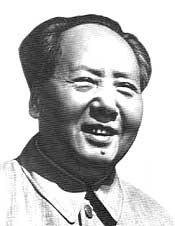
|
"A revolution is not a dinner party, or writing an essay, or painting a picture, or doing embroidery: it cannot be so refined, so leisurely and gentle, so temperate, kind, courteous, restrained and magnanimous. A revolution is an insurrection, an act of violence by which one class overthrows another." (Quotations from Chairman Mao Tse-tung) |
Mao Tse-Tung is considered one of the "great theorists of Marxism communism. He founded the Peoples Republic of China and was a founder of the Chinese Communist Party.
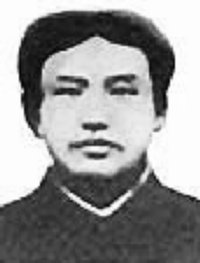
A young Mao Tse-Tung
Mao Tse-Tung (Zedong) was born December 26, 1893. His family were well-to-do farmers living in a village called Shaoshan in the Hunan Province. Mao worked in the fields and attended a local school. In 1910, Mao was sent to another, better school in town, even though his father was afraid Mao wouldn't want to continue to be a farmer.
In 1911, the Republican Forces led by Sun Yat-Sen overthrew the Manchu-Qing Dynasty. The Chinese middle and lower classes followed Sun Yat-Sen and Mao joined the army. Mao left soon after and began to study as a teacher. At this time he began to read radical writings and in 1919, he returned to Hunan and immersed himself in activities involving politics. He wanted to get rid of the Nationalist warlords and saw Marxism was the way to do it. He soon was in charge of the Hunan Province revolutionary movement. He wanted to be leader of the revolt and become leader of China.
In 1920, he married Yang K'ai-hui, and although to support himself he became a primary school principal, he also continued his revolutionary activities.
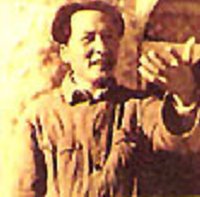
Mao the activist leader
In 1921, he co-founded the Chinese Communist Party and organized the Kuomintang sponsored Peasant and Industrial Union’s training institutes.
During this time Mao wrote "Investigation of the Peasant Movement in Hunan." In this thesis he stated he thought that the peasant class, since there were so many of them, would be able to successfully revolt against the war lords. In 1926, Ching Kai-shek took over when Sun Yat-sen died. Chiang murdered many of the radicals, which spurred a revolution between Mao and Chiang and the Nationalists. During the next couple of years the radicals lost many people in the struggle. When the Communists and Kuomintang split in 1927, Mao led the "Autumn Harvest Uprising."
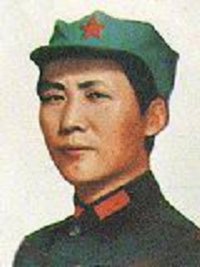
"Political power grows out of the barrel of a gun." (Mao Tse-tung)
Between 1928 and 1931, Mao and many others recruited a rural communist armed force called simply the "Red Army." Mao developed new guerrilla tactics and warfare during this time. In 1930, his wife was executed by the Chinese Nationalists and in later that same year Mao remarried a woman named Ho Tzu-chen. She accompanied him on the "Long March" in 1934. In the Long March the radicals were forced to retreat for two years over six thousand miles from the Nationalist forces. While Mao and the Red Army were forced to retreated from South East China to North West China, Mao slowly emerged as one of the most important communist leaders.
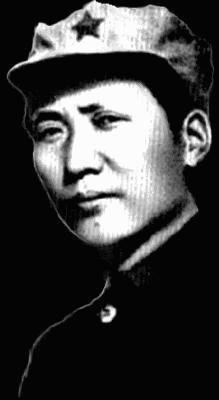
Mao as leader of the Red Army
In 1937, he divorced Ho Tzu-chen and in 1939 married Chiang Ch'ing. That same year Japan declared war on China and during World War II the Chinese Communist Party (CCP) and the Nationalists Forces of the Kuomintang each fought against the Japanese invaders while still battling a Civil War against each other. They eventually defeated the Japanese and the Communists took over most of the mainland, defeating the Kuomintang in the process. Mao became Chairman of the Central Government Council and established The Peoples Republic of China in October of 1949.
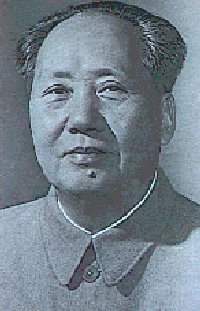
Chairman Mao Tse-Tung
Mao inherited a poverty stricken country and following the USSR's model he ordered the redistribution of lands, attempted to establish heavy industry, and ordered the banishment of warlords.
In 1958, he launched the "Great Leap Forward" which called for all Chinese to do huge amounts of physical work to change the economy so that they could be better their lives and have more production. His program failed drastically, causing millions of deaths and leaving China starving. For awhile, he was unpopular with the Chinese and had to withdraw from public. Mao received much criticism. Liu Shaoqui, an opponent of the Great Leap Forward, replaced Mao as Chairman in 1959. Mao was not finished though, he launched the "Cultural Revolution" campaign to re-establish himself with the help of his wife Chiang Ch'ing. Mao removed Liu from power and in 1970 was named Supreme Commander of the nation and the army. The Cultural Revolution continued until Mao died in September of 1976 from Parkinson's disease.
In 1977, the CCP declared the Cultural Revolution to be over and Mao’s surviving opponents regained power. The almost cult status surrounding Mao slowly disappeared. However, his most famous quotes have been published in a collection called "The Little Red Book." It is still considered a bible for revolutionaries.
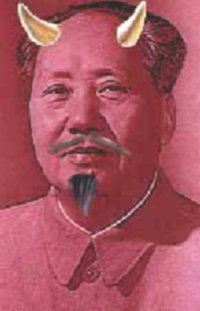
Mao seen through Western eyes
Mao did much in his life, he led the Red Army to overthrow the Chinese warlords, he founded the Communist People's Republic of China, and for 25 years was a leader and the figure of adoration to the Chinese people. Although many criticize him for his mistakes and being the cause of so many deaths, others admire his contributions and his resistance against Japan. Whether you feel he was a contributor or a terrorist, you’ll agree that Mao Tse-tung certainly was a influential character in history.
Sources:"Encyclopedia of Marxism" at http:/csf.colorado.edu/mirrors/marxists.org/glossary/people/m/a.htm#ma, 5-11-00
"Student Briefing Page" at http://future.newsday.com/cards/cards1027.htm, 5-11-00
"Mao Zedong" at http:/www.infoplease.com/ce5/CEO32718.html, 5-11-00
"Mao Zedong" at http://www.who2.com/maozedong.html, 5-11-00
Portrait #1 - "Quotations from Chairman Mao Tse-tung" from: http://www.who2.com/maozedong,html
Portrait #2 - "A young Mao Tse-Tung" from: http://www.china-window.com/Hunan_w/mrzl/mzd-e.htm
Picture #3 - "Mao the activist leader" from: http://encarta.msn.com/
Picture #4 - "Mao Tse-tung" from: http://encarta.msn.com/
Picture #5 - "Mao as leader of the Red Army" from: http://encarta.msn.com/
Picture #6 - "Chairman Mao Tse-Tung" from: http://www.sirius.com/~ccc/goodbad.htm
Picture #7 - "Mao seen through Western eyes" from: http://www.sirius.com/~ccc/goodbad.htm